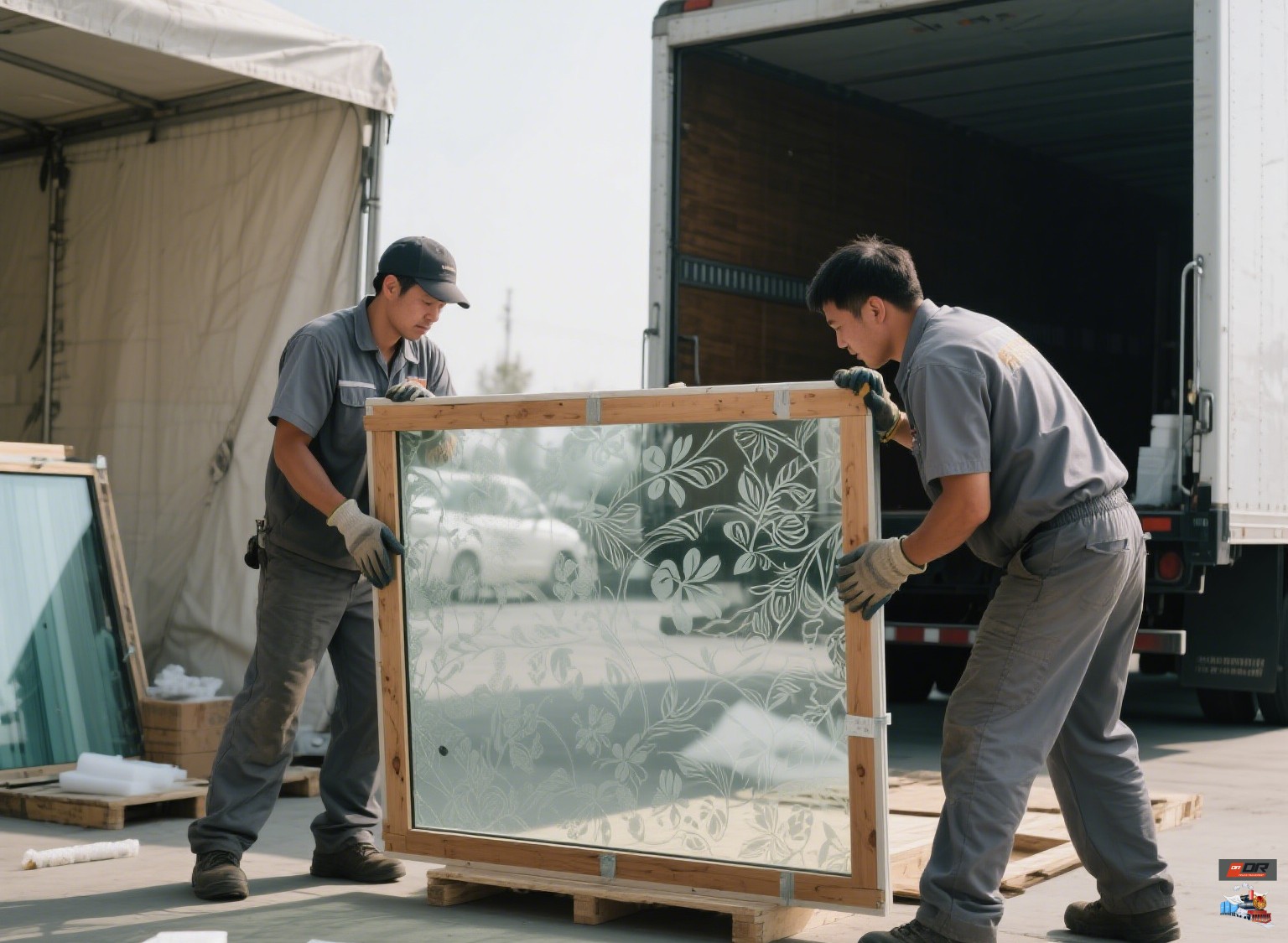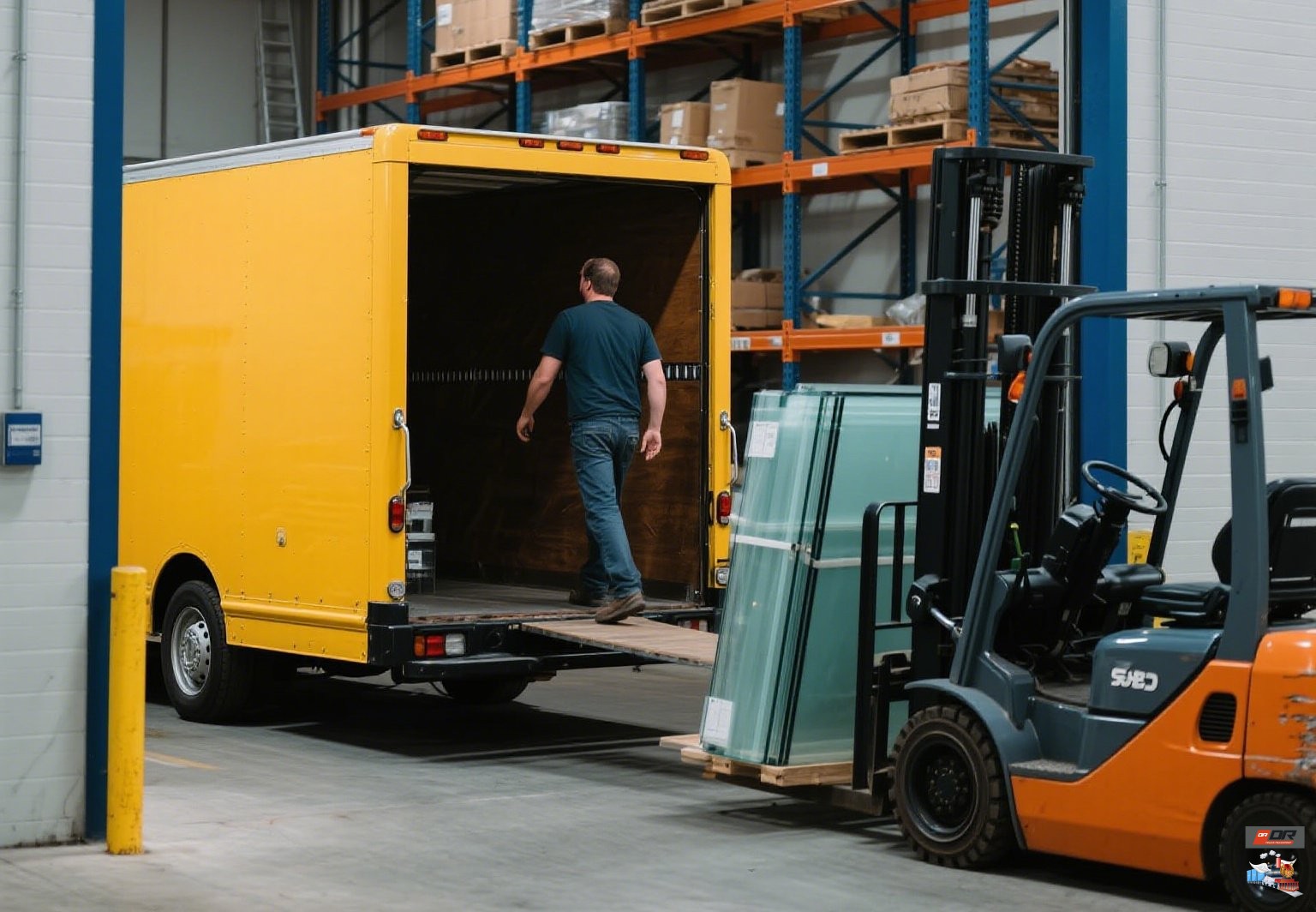كيفية نقل الزجاج المقسّى بأمان وكفاءة؟
Apr 30, 2025
كيفية نقل الزجاج المقسّى بأمان وكفاءة؟
الزجاج المقسّى، المعروف بمتانته وثباته الحراري، يُستخدم على نطاق واسع في البناء والسيارات والتصميم الداخلي. إلا أن نقله يُشكّل تحديات كبيرة نظرًا لهشاشته وحساسيته تجاه سوء التعامل. تُقدّم هذه المقالة دليلاً شاملاً لنقل الزجاج المقسّى بأمان وكفاءة، مع التركيز على الطرق بين الصين وآسيا الوسطى وروسيا وبيلاروسيا. By دمج أفضل الممارسات وتحسين الخدمات اللوجستية والخبرة الإقليميةيمكن للشركات تقليل المخاطر وتعزيز موثوقية سلسلة التوريد.

1. فهم خصائص الزجاج المقسّى ومخاطره
يخضع الزجاج المقسّى للتقوية الحرارية، مما يجعله أقوى من الزجاج العادي بأربع إلى خمس مرات. ورغم متانته، تبقى حوافه وزواياه عرضة للصدمات، وقد يؤدي سوء التعامل معه إلى كسر تلقائي (انفجار ذاتي) بسبب الضغط الداخلي. تشمل المخاطر الرئيسية ما يلي:
- الإجهاد الحراري:قد تؤدي التغيرات السريعة في درجات الحرارة أثناء النقل إلى إضعاف سلامة البنية.
- التأثير المادي:يمكن أن يؤدي التغليف غير المناسب أو النقل غير الصحيح أثناء النقل إلى حدوث تشققات.
- ضرر الحافة:الحواف معرضة للتقطيع إذا لم يتم حمايتها بشكل كافٍ.
للتخفيف من هذه المخاطر، تعتبر بروتوكولات التغليف والنقل المتخصصة ضرورية.
2. أفضل الممارسات للتغليف والتداول
أ. تقنيات التغليف الآمن
- النقل العموديانقل الزجاج المقسّى دائمًا بشكل عمودي لتقليل الضغط على سطحه. استخدم رفوفًا على شكل حرف A أو صناديق خشبية مزودة بواقيات حواف لمنع التلامس بين ألواح الزجاج.
- مواد التبطين:قم بإضافة حشوة ناعمة، مثل الفواصل المصنوعة من الرغوة أو المطاط، بين الطبقات لامتصاص الاهتزازات.
- التحكم في المناخ:تجنب التعرض لدرجات الحرارة القصوى باستخدام حاويات معزولة أو مركبات ذات تحكم في المناخ.
ب. بروتوكولات التحميل والتفريغ
- المعدات المتخصصة:استخدم أكواب الشفط أو المشابك المخصصة للتعامل مع الزجاج لتقليل الاتصال المباشر.
- تدريب القوى العاملة:تأكد من أن الموظفين يرتدون معدات الحماية ويتبعون البروتوكولات لتجنب إمالة الألواح أو إسقاطها.

3. اختيار وسيلة النقل الأمثل
اختيار يمين يُعدّ أسلوب النقل بالغ الأهمية لتحقيق التوازن بين التكلفة والسرعة والسلامة. فيما يلي مقارنة بين خيارات الطرق بين الصين وأوراسيا:
| وضع | وقت العبور | كفاءة التكلفة | مستوى المخاطر |
|---|
| شحن السكك الحديدية | 10-20 يومًا | معتدل | منخفض (طرق مستقرة) |
| النقل البري | 15-30 يومًا | عالي | معتدل |
| الشحن الجوي | 2-5 أيام | عالية جدًا | قليل |
لماذا تهيمن السكك الحديدية على طرق النقل في أوراسيا؟
يجمع النقل بالسكك الحديدية بين الموثوقية والفعالية من حيث التكلفة، مما يجعله مثاليًا لشحنات الزجاج المقسّى:
- سرعة:تستغرق خطوط السكك الحديدية من الصين إلى آسيا الوسطى (على سبيل المثال، ميناء ألاشانكو أو ميناء خورغوس) ما بين 10 إلى 14 يوماً، متفوقة على الشحن البحري.
- استقرار:أقل عرضة للاضطرابات الجوية مقارنة بالطرق البرية أو البحرية.
- كفاءة الجمارك:الشراكة مع مقدمي الخدمات اللوجستية مثل عزيزي هيئة النقل بالسكك الحديدية لتبسيط إجراءات التخليص والتوثيق على الحدود للممرات بين الصين وروسيا وبيلاروسيا.
4. تحسين مسارات الممرات بين الصين وآسيا الوسطى وروسيا
أ. خطوط السكك الحديدية الرئيسية
- الصين إلى كازاخستان:الانطلاق من شيآن أو تشونغتشينغ، والمرور عبر ميناء خورغوس، والوصول إلى ألماتي أو نور سلطان.
- الصين إلى روسيا:استخدم خط السكك الحديدية الصيني السريع (CR-Express) عبر حدود أنتشولي أو سويفينهي، للاتصال بموسكو أو سانت بطرسبرغ.
- الصين إلى بيلاروسيا:الارتباط بجسر الأرض الأوراسي الجديد، الممتد من تشونغتشينغ إلى مينسك عبر روسيا.
ب. الاستفادة من طرق البحر القطبي الشمالي (NSR)
بالنسبة للشحنات الضخمة (حتى 3,300×13,000 مم11)، يُنصح باستخدام طريق البحر الشمالي (NSR). على الرغم من كونه موسميًا، يُقلل هذا الطريق وقت النقل بنسبة 30% مقارنةً بالطرق البحرية التقليدية، ويتجنّب المخاطر الجيوسياسية في مناطق النزاع.
5. الامتثال وإدارة المخاطر
أ. المتطلبات التنظيمية
- معايير السلامة:ضمان الامتثال للمعايير الدولية مثل ANSI Z97.1 أو EN 12150 للزجاج المقسّى.
- وثائق الجمارك:توفير قوائم التعبئة التفصيلية، وشهادات التلطيف، وتقارير تأمين الحمولة لتجنب التأخير.
ب. التأمين والتخطيط للطوارئ
- التغطية الشاملة:تأمين الشحنات ضد الكسر، والتلف الناتج عن درجات الحرارة، وتأخير النقل.
- عمليات التفتيش الدورية:إجراء فحوصات ما قبل الشحن بحثًا عن عيوب الحافة أو علامات الإجهاد.
6. دراسة حالة: الشحن الناجح إلى كازاخستان
قامت شركة صينية لتصنيع الزجاج مؤخرًا بتصدير 20 طنًا من الزجاج المقسّى إلى ألماتي عبر الشحن بالسكك الحديدية. وتضمنت الخطوات الرئيسية ما يلي:
- التغليف العمودي:ألواح زجاجية تم تأمينها في إطارات على شكل حرف A مع واقيات الحافة.
- اختيار المسار:تم الشحن عبر ميناء خورغوس، مما أدى إلى تقليص وقت العبور إلى 12 يومًا.
- التعاون بين الشركاء:عملت مع عزيزي هيئة النقل بالسكك الحديدية للتخليص الجمركي والتتبع في الوقت الحقيقي.
- وصلت الشحنة سليمة، مما يدل على فعالية الجمع بين التغليف القوي والخدمات اللوجستية المحسنة.
7. الاتجاهات المستقبلية: الاستدامة والتكنولوجيا
- الحلول الصديقة للبيئة:ينبعث من شحن السكك الحديدية انبعاثات ثاني أكسيد الكربون أقل بنسبة 25% من النقل البري، وهو ما يتماشى مع أهداف الاستدامة للشركات.
- التتبع الرقمي:تعمل أجهزة الاستشعار المدعومة بتقنية إنترنت الأشياء على مراقبة حالة الزجاج (على سبيل المثال، درجة الحرارة والاهتزازات) في في الوقت الحالى.

خاتمة
يتطلب نقل الزجاج المقسّى بين الصين وأوراسيا مزيجًا استراتيجيًا من المناولة المناسبة وتحسين المسار والامتثال للقواعد التنظيمية. By إعطاء الأولوية للشحن بالسكك الحديدية لتوازنه بين السرعة والموثوقيةيمكن للشركات ضمان التسليم الآمن مع خفض التكاليف. من أجل إيجاد حلول مخصصة في ممر الصين وآسيا الوسطى وروسيا، يستكشف عزيزي هيئة النقل بالسكك الحديديةخبرة في مجال الخدمات اللوجستية الزجاجية الآمنة والفعالة.


